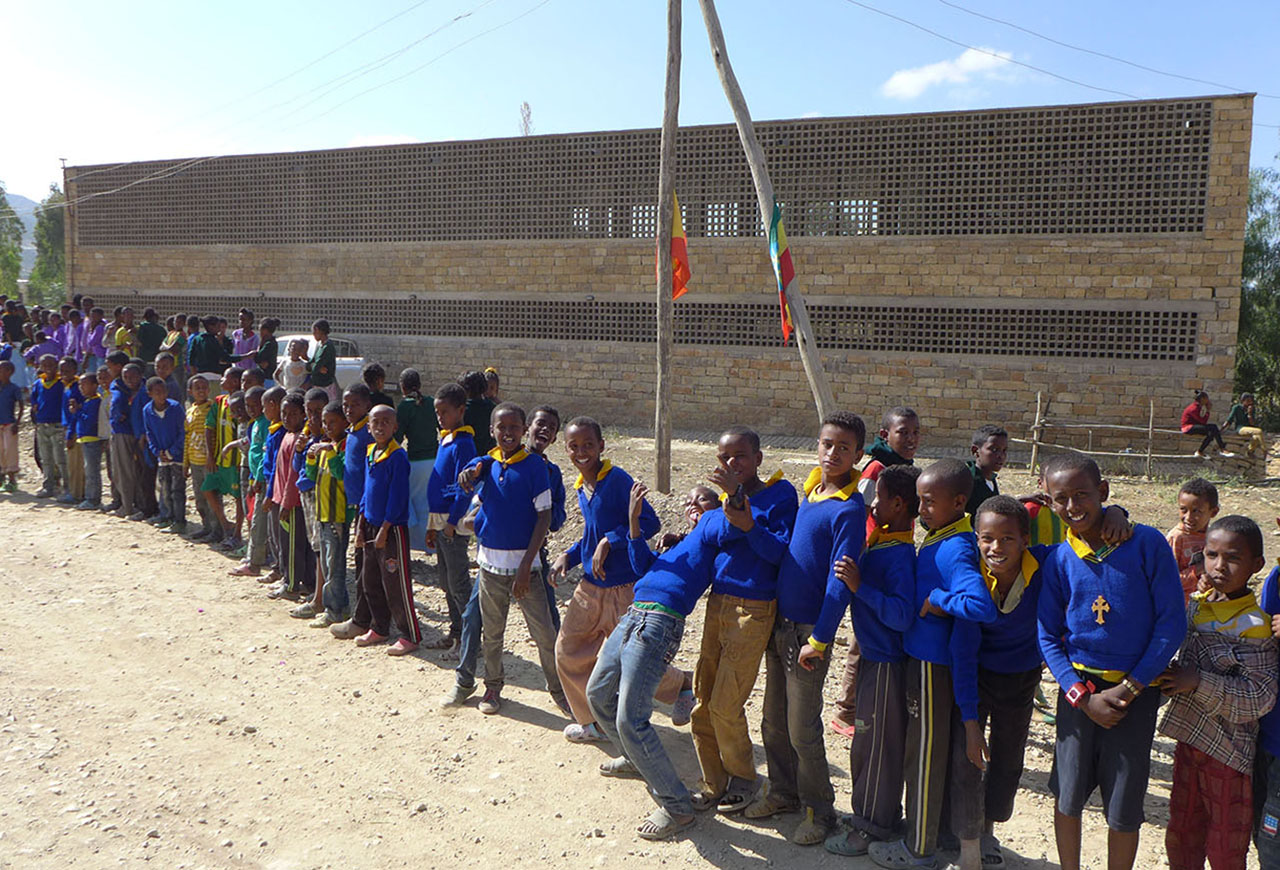











Archaeological Museum in Wukro, Ethiopia
Client: Society for the Promotion of Museums (Berlin) with the Culture and Tourism Agengy of Tigray - CTA
Location: City of Wukro, exit road east
1. Prize, competition 2010, detail design and site supervision for building construction, landscape and exhibition execution. Planning and Construction: 2010-2015.
Gross floor area: ca. 1.800 m2, 1. Phase with ca. 900 m2 (finished Dec. 2014) Landscape Design for a plot with 4.500 m2
Short description: The city of Wukro is located around 600 km north of the capital Addis Ababa, along the highway connecting to Asmara, on the ethiopian plateau (2.100 m) not far from the edge to the desert of the Danakil Depression. The region has an enormously rich history: close to the Museum there is the rock hewn church Wukro Chercos, one of the oldest in Ethiopia (some 1.500 years old), and just 10 km north of Wukro lies the village Negasch, where according to tradition part of Mohammed´s family and followers found asylum in the year 615 under the King of Aksum. 2008, significant archaeological findings from the so called „ethio-sabean“ period (1.000-700 BC) took place on the hillside of Makeber Gaʼewa in the surroundings of Wukro, and since they have been researched by the German Archaeological Institute (DAI). The original objects from this and other excavations in the region, covering some 2.000 years of early Ethiopian history, will be shown, researched and restored in the new Museum. The Museum compound was conceived around a former Generator Building from the 1970´s that housed the first source of electricity of the city. This existing structure serves as an entrance building with a Museum´s Shop, a Cafe and a small multifunctional auditorium with the restored machines (and an exhibition of correlated technical history). It is surrounded by three new buildings housing the exhibition of archaeological findings, the magazine and restoration workshop, premises for researchers, administration and the local offices for the Cultural and Tourism Office of Tigray (CTA). The exhibition spaces can be expanded according to the progress of archaeological excavations. A market square turned to the main road is defined by an arcade with small retail and workshops for the local craftsmenship and offers an interface between the local population, the researchers and tourists. The walls of the Museum´s buildings are made of massive local limestone blocks with integrated concrete structure (seismic area). The fassade panels made with concrete hollow blocks manufactured on site ensure cross ventilation, sun protection and security without the use of fences. The concrete flat roofs are covered with earth in analogy to the local farmers house tradition, for the sake of providing extra insulation in a region with extreme temperatures and abundant solar incidence. Photovoltaic panels are to be installed on them, also to compensate constant electricity breakdowns. The courtyard serves as an Impluvium“ for the collection of rain water. The Museum´s Gardens are conceived exclusivelly with native species from the highland region such as Acacias, Aloes, Suculenta e Cactus types.
Project coordination in Germany: Nina Melchers (GFMÄ) Project coordination in Ethiopia: Ato Kebede Amare (CTA)
Site supervision: Building Department of Wukro and NM Architects
Excavations in Makeber Ga´ewa, Wukro surroundings: DAI (Deutsches Archaeologisches Institut), Dr. Pawel Wolf.
Restauration of the historical Machines: Professors and Students of the HTW (Hochschule für Technik und Wirtschaft Berlin) and of the University Mekelle.
Exhibition Design: NM Architects with Professors and Students of the HTW-Berlin and Scala-Berlin.
Landscape Design: NM Architects, Museum´s Garden management: St. Mary´s College Wukro.
Support of the desing team and on site: Christoph Melchers
Team NM: Lutz Heilmann, Yasser Almaamoun












